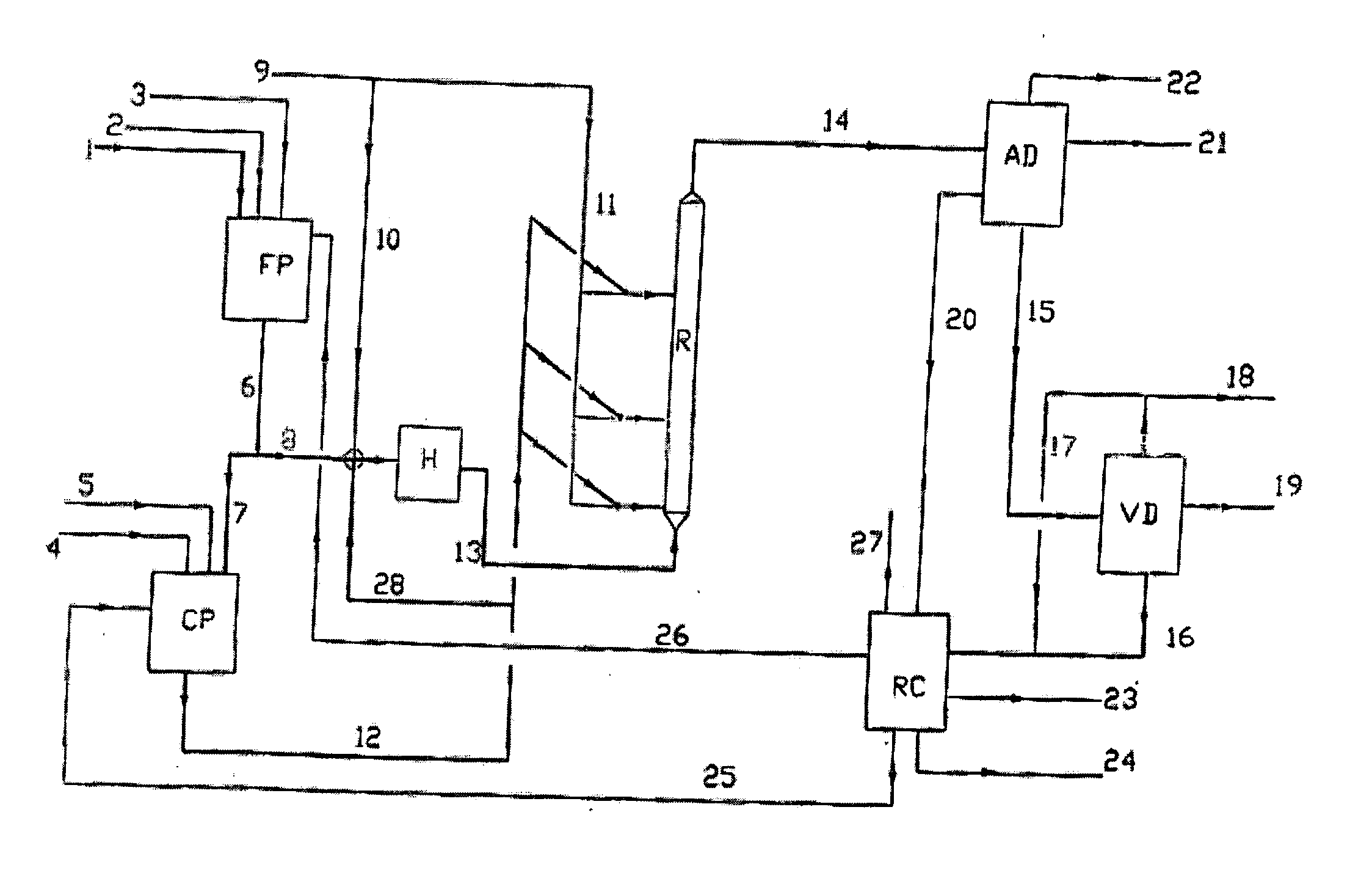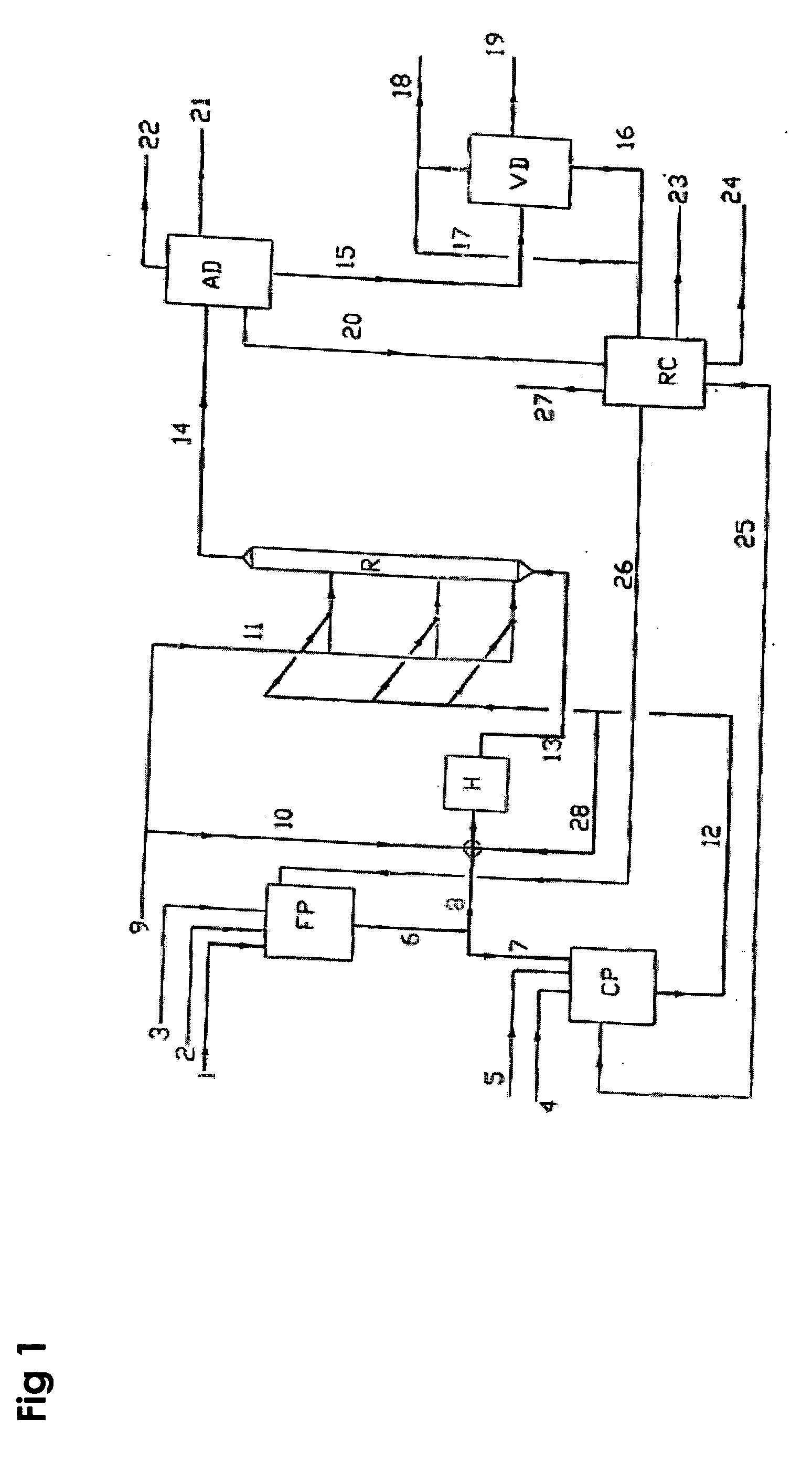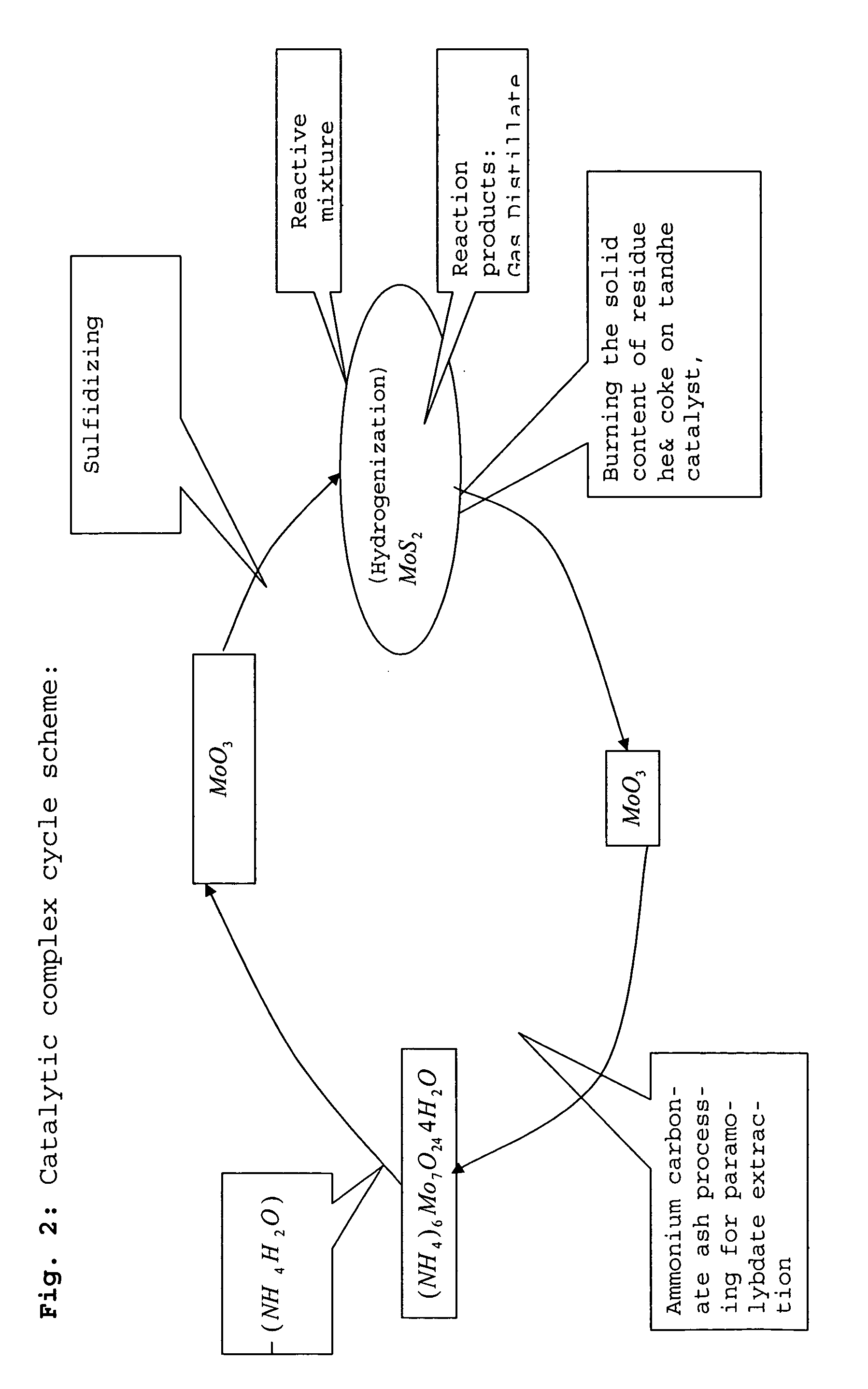Process for hydroconverting of a heavy hydrocarbonaceous feedstock
a technology of hydrocarbonaceous feedstock and hydrocarbonaceous catalyst, which is applied in the field of new hydrocarbonaceous feedstock hydroconverting process, can solve the problems of high cost of used catalyst, high amount of produced coke, and difficulty in preparing catalyst, etc., and achieves high rate of return
- Summary
- Abstract
- Description
- Claims
- Application Information
AI Technical Summary
Benefits of technology
Problems solved by technology
Method used
Image
Examples
examples 1-20
Activation of Heavy Hydrocarbons:
[0127] The heavy hydrocarbon was activated by using physicochemical processes and a simultaneous addition of high surface-tension modifiers. To do this, the heavy oil residue, was mixed with the modifiers in a mixing vessel. Then a dispersion and homogenization operation was performed by adding oil fractions that contain aromatic hydrocarbon modifiers. The dispersion and homogenization were performed by means of special equipment and by using the hydrodynamic effect of vapor-liquid streams with ultrasonic speed or by vibration-vacuum mechanisms that operate under high voltages, with high speeds and highly pulsed streams.
[0128] The dispersion of the resulting composite (suspensions, emulsions, colloidal solutions) was at most 200-500 nm. In laboratory conditions mechanical disk sprays, having a lower efficiency were more useful using such systems, said dispersion reaches to about 300 nm.
[0129] The activation trend was accompanied by the reduction ...
examples 21-39
Catalyst Complex Preparation:
[0137] Examples on the preparation of said catalyst complex are presented in tables 4 and 5. Said catalyst complex is a highly dispersed emulsion of an aqueous catalyst element solution in an oil product. To do this a miscible ammonium paromolybdate (APM) of a desired concentration was solved in the activated feedstock that was heated up to 80-90° C., and then the dispersion was performed so as to disintegrate, mix and homogenize to get a stable emulsion. The quality of the resulting emulsion was evaluated based on its viscosity, number of drops per volume unit and particle sizes. In examples 21-31 activated materials similar to example 4, were used.
[0138] To evaluate the effect of the disperse phase, in examples 22-24, the amount of water was increased while the amount of Mo was kept constant. In example 21, ammonium paramolybdate (APM) was dispersed in the pre-activated feedstock, without an aqueous phase. Addition of water dramatically decreases th...
examples 42-63
Hydroconversion Experiments:
[0142] Hydroconversion experiments were performed in a reactor with a 2 kg / h capacity. Said reactor was a vertical cylindrical type with a volume of 1000 Cm3, equipped with a three-part compensation electrical heater. Hydrogen and catalyst injections were performed in a segment before the heater, in the reactor entrance, and after the said first and second parts of said heating sections.
[0143] In examples 42-44, a sample of heavy oil residue A, activated according to example 4, was hydrogenised by adding 10%, by mass, of said catalyst complex, that was prepared according to examples 22-24, and the amount of water which ranged from 10-30%, by mass.
[0144] The amount of water being 3%, by mass, of the feedstock in example 44, the hydroconversion indexes will not be good, the amount of conversion and desulfurization decrease. In example 42, the values for hydrogenization parameters, were defined with the product out let and desulfurization, as criteria, i...
PUM
| Property | Measurement | Unit |
|---|---|---|
| boiling point | aaaaa | aaaaa |
| temperature | aaaaa | aaaaa |
| boiling points | aaaaa | aaaaa |
Abstract
Description
Claims
Application Information
 Login to View More
Login to View More - R&D
- Intellectual Property
- Life Sciences
- Materials
- Tech Scout
- Unparalleled Data Quality
- Higher Quality Content
- 60% Fewer Hallucinations
Browse by: Latest US Patents, China's latest patents, Technical Efficacy Thesaurus, Application Domain, Technology Topic, Popular Technical Reports.
© 2025 PatSnap. All rights reserved.Legal|Privacy policy|Modern Slavery Act Transparency Statement|Sitemap|About US| Contact US: help@patsnap.com



